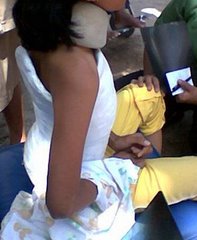Efficacy of different therapy regimens of low-power laser in painful osteoarthritis of the knee: a double blind and randomized-controlled trial
Gur A; Cosut A; Sarac AJ; Cevic R; Nas K; Uvar A
Physical Medicine and Rehabilitation ;
BACKGROUND MEDICINE OBJECTIVES: A prospective , double blind, randomized, and controlled trial was conducted in patients with knee osteoarthritis (OA) to evaluate the efficacy of infrared low-power Gallium-Arsenide (Ga-As) laser therapy (LPLT) and compared two different laser therapy regimens.
STUDY DESIGN/ MATERIALS AND METHODS: Ninety patients were randomly assigned to three treatment groups by one of the nontreating authors by drawing 1 of 90 envelops labeled ‘A’ (Group I : actual LPLT consisted of 5 minutes, 3 J total dose +exercise ; 30 patients ), ‘B’ (Group II: actual LPLT consisted of 3 minutes , 2 J total dose + exercise ; 30 patients); and ‘C’ (Group III: placebo laser group + exercise ; 30 patients). All patients received a total of 10 treatments , and exercise therapy program was continued during study (14 weeks). Subjects, physician, and data analysis was complete. All patients were evaluated with respect teek 0o pain, degree of active knee flexion, duration of morning stiffness, painless walking distance and duration , and the Western Ontario and
RESULTS: Statistically significant improvements were indicated in respect to all parameters such as pain , function, and Quality of Life (QoL), measures in the post-therapy period compared to pre-therapy in both active laser groups (p< style=""> and in parameters such as pain, and WOMAC of the Group II , were more statistically significant when compared with placebo laser group (p<>
CONCLUSIONS: Our study demonstrated that applications of LPLT in different dose and duration have not affected results and both therapy regiment were a safe and effective method in treatment of knee OA.Copyright 2003 Wiley- Liss, Inc.
PMID: 14677160 (PubMed – indexed for MEDLINE)







